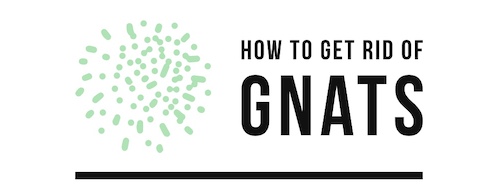Summer is always a time for celebration. The sun’s shining, birds are chirping, skies are bright and blue… At least, the joy will only last as long as before the gnats arrive at your doorstep. Pesky gnats, all because you forgot a slice of old fruit in the kitchen, or if you’ve not been as thorough with clearing out the garbage. While they don’t bite, gnats are ever so annoying. So, it doesn’t hurt to arm yourself with a bit of knowledge on how to get rid of gnats.
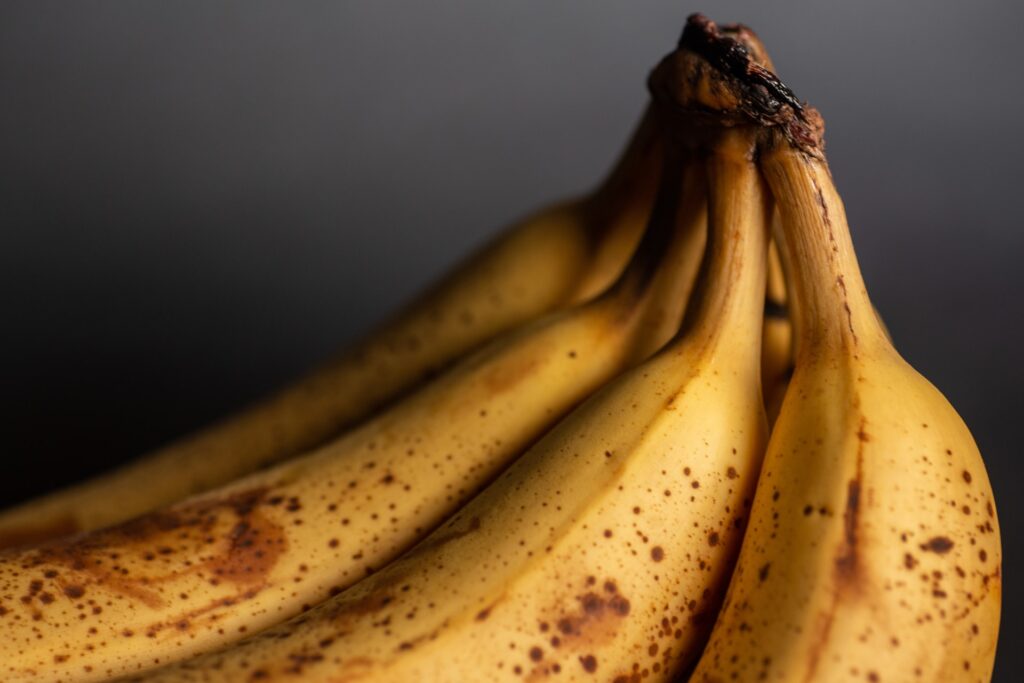
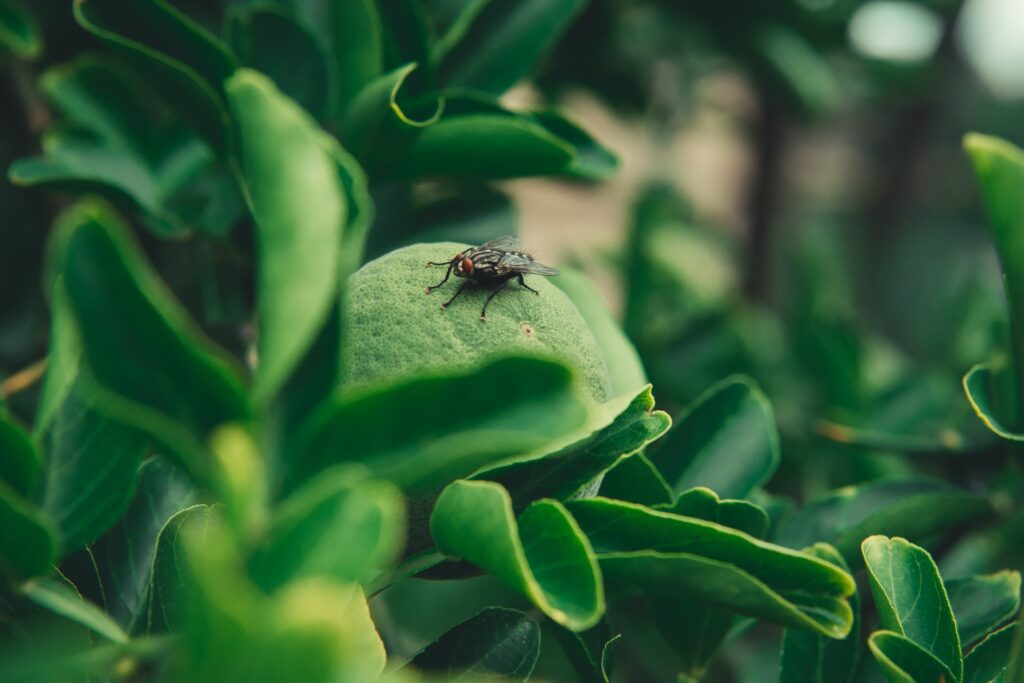
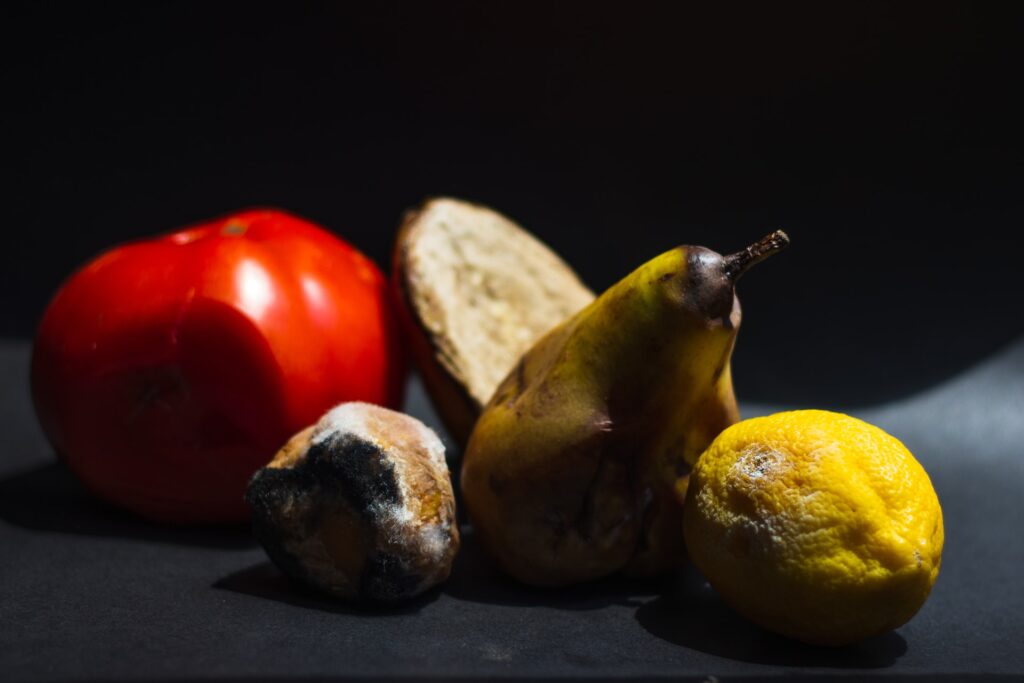
Option 1 – Lure And Trap Them
A tried-and-tested method in how to get rid of gnats. All you need is a bowl filled with a few tablespoons of apple cider vinegar, water, and a bit of sugar. Then, add some dish soap into the mix, and give it a good stir. The sweetness will lure the gnats into the bowl before the sticky dish soap traps them into the mixture. Sugar is optional but it could make your trap that bit more enticing with its rich sweetness.
Option 2 – Use It Against Them
Gnats love their fruits, so why not use their very favorite organic produce against them? Grab a bowl, and place a piece of fruit inside it. Say, a slice of an apple, or some mashed bananas. Then, wrap the top of the bowl with plastic wrap, and poke some very tiny holes in the plastic. Oftentimes, it’ll be easy for the gnats to crawl inside to take a bit of the fruit. However, they usually can’t climb back out so easily, or not at all.
Option 3 – Flush The Gnats Out
Gnats also have the habit of grouping around areas with a lot of moisture, such as your bathroom or kitchen sink. Your sink’s drain, in particular, could be host to an entire colony of gnats at once. If that’s the case, grab a bottle of diluted bleach. If that’s not available, use a cup to mix in heavily concentrated bleach with water. Then, pour it down your gnat-infested drain to kill them, and flush it down with some hot water afterward.
What Are These Gnats That You’re Trying To Get Rid Of?
Before we get to how to get rid of gnats, it might prove handy to learn more about what they are, as well as why they exist. Quite simply, gnats are small flying insects, which resemble tinier versions of house flies. A key difference is that gnats commonly like to fly together in large swarms, or “clouds”. Although, it’s worth mentioning that the term ‘gnats’ is quite loosely defined, even by the experts.
The general consensus is that as long as they’re small, flies in swarms, are attracted to moisture and organic material, while also don’t bite, then they’re official a ‘gnat’. Granted, there are certain types or subspecies of gnats that do like to bite, even though they’re usually harmless. As we noted, gnats usually make an appearance in your home, backyard, or garden when summer comes around.
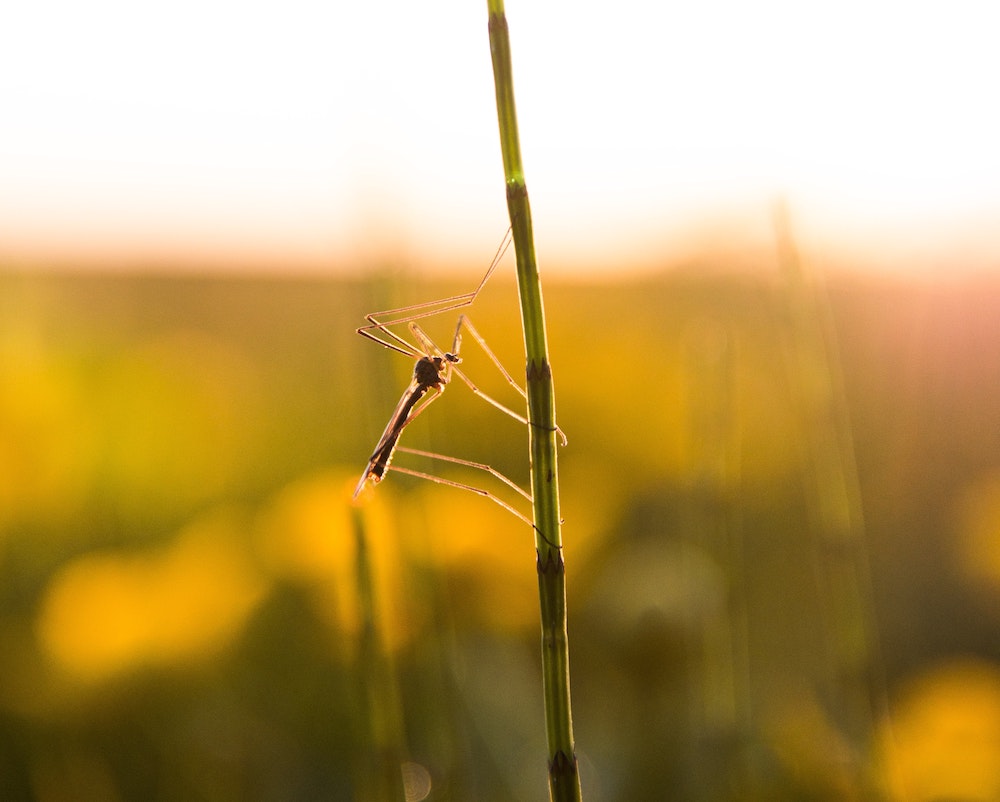
So, why is that, and why don’t they show up in chiller parts of the year, such as winter? Well, it turns out that gnats prefer to populate in areas where there’s a lot of moisture and vegetation. Those two things aren’t particularly abundant in winter. With that said, they’re an all-season pest if you happen to live in coastal or tropical parts of the world. For instance, in the southern States or seaside towns.
Gnats are often confused with other small, flying, fly-type insects that regularly infest your home. To better understand how to get rid of them, and where to find their usual gathering spots that you can then exterminate, it might be handy to learn more about the different types of gnats. If we break it down more thoroughly, there are at least a dozen different sub-species of gnats that you might spot.
What Are The Different Breed Of Gnats To Get Rid Of?
However, within and around your home, you’ll likely only encounter three distinct breeds of gnats. It can be hard to tell them apart, besides the unique color and characteristics of their bodies. Though, they also inhabit and fly around distinct parts of your house, depending on what they’re attracted to the most:
- Fruit Flies – Brown in color, and their bodies are mostly roundish. These are the most common gnats that you will meet. As their name suggests, fruit flies are attracted to fruits, as well as vegetables. It could either be ripe or fresh, although they especially love spoilt, rotting, and decayed ones. On top of that, they frequently visit your trash (they like that garbage smell), in addition to the scent of alcohol.
- Fungus Gnat – Dark in color, with very long legs. If you have houseplants around, then you’d likely have an encounter with one before. Fungus gnats love hanging around vegetation, which is also a good location for them to lay eggs. Typically, they’ll lay eggs in the wet soil around a plant. You can often see fungus gnats gathering on the bed of soil, or sometimes around the rim of the plant pot or planter.
- Drain Flies – They have wings that look close to what you’d find on a moth but much smaller, and have fairly hairy bodies. As the name implies, they prefer to hang out near areas with stagnant water. In your house, these are usually the drains, in and around the bathroom, and other places with a lot of moisture. They also like to be around sewers and septic tanks. This is where the eggs are laid.
How About Those Gnats That Might Not Reside In Your Home?
Several more common types of gnats, which you can usually find away from your home, include:
- Midges – Some bite, while others don’t, and both live near aquatic areas such as swamps, streams, rivers, or lakes.
- Sand Flies – They prefer to live in humid areas, and they can bite, leaving behind red marks or rashes, and could give you a fever.
- Buffalo Gnats – While small, they’re known to kill livestock and will bite humans to draw blood, often around the neck. They’re attracted by sweat and other bodily fluids or secretion.
- Eye Gnats – Sometimes called ‘grass flies’, they’re usually buzzing around your eyes, nose, and mouth for secretion. The former can transmit pink eye if you’re not careful.
- Gnat Bugs – Also known as the ‘unique-headed bugs’, they encompass 130 sub-species and live near woodlands or forestation. They typically don’t bite.
- Phorid Flies – They almost look like fruit flies in appearance, but they have a humpbacked body. Just like fruit flies, phorid flies prefer to be around decaying organic matter, like old fruit.
- Sphaerocerid Flies – Also called the ‘dung fly’, they spend a lot of time around manure. For example, feces left behind by your pet cat or dog, which remained uncleaned.
- Stable Flies – Looks like a housefly, but they spend most of their time around horse stables, dog kennels, or by the seashore. They do like to bite, leaving behind painful stings.
- Blow Flies – Generally, they hover around and lay eggs on the decayed remains of animals. Those eggs can then hatch pretty quickly.
What’s Causing Gnats To Appear, Forcing You To Get Rid Of Them?
Having learned of all the varying species of gnats that you’ll have to exterminate, there’s a pertinent question left unanswered. Why is it that you have gnats in your home, requiring that you learn how to get rid of gnats? Apart from the fact that summer’s here, and the weather is just about getting a tad hot and humid for them to multiply, several factors prompt them to appear in your home.
Gnats start by flying through gaps in the doors, open windows, or holes in the walls to invade your home. A few gnats are already problematic enough, given how quickly their eggs can hatch. While it may differ depending on the species of gnats that you’re seeing, a female gnat could lay hundreds of eggs at a time. With some breeds of gnats, it takes as little as a week for them to hatch.

Gnats can appear in your home, as they’re looking for a place to eat and breed. They’re especially in fascination with a few key elements in your house that make it inviting for them to let themselves in. It can include the following, which might provide you with some ideas of how to prevent gnats from reappearing in your home again…
Key Reasons Why You’re Having To Get Rid Of Gnats Around You
- Organics – Decayed or rotten plants, flowers, fruits, and vegetables. Gnats can feed on the remains of these organic matter, such as the mold, fungus, moss, and compost left behind. Alternatively, the soil in your planter is a good place for them to feed on rotten roots or decayed fallen leaves.
- Moisture – Moist soil, garbage, puddles, water leakage, stagnant water, as well as any spillage. So long as it has moisture in it, gnats will feed off them. This can also encompass plants and grass that have been overwatered, or perhaps condensation misting up your windows and vents.
- Fruits Or Vegetables – Just like organic material, fruit and vegetables will attract gnats. This happens as you leave either fruits or vegetables exposed, and out in the open. They tend to prefer sweet-smelling fruits or produce. Aside from that, fallen fruits can also bring gnats to your garden.
- Humans – As explained earlier, some types of gnats like to stick around humans to feed on bodily fluids. These can include sweat on your skin, mucus from your nose, tears from the eyes, or even the carbon dioxide from your breath. Saliva and body heat are also desired by gnats.
- Cosmetics – Gnats can also be attracted to sweet smells. Thus, wearing lotion, perfume, deodorant, hairspray, or cologne with a sweet scent of fruity essence will be noticed by gnats. Moreover, using sweet detergent in your clothes might bring attention to gnats, too.
- Light – Similar to flies, gnats can’t see or navigate well in the dark. As such, they prefer to fly close or around bright light sources. Outdoor lighting fixtures will be especially great spots for entire swarms of gnats to hover by.
How To Get Rid Of Gnats For Good?
Up above, we noted the top-3 ways in how to get rid of gnats. However, there are plenty more ways to eliminate the pesky things from your home, ensuring a gnat-free atmosphere. While some of the techniques mentioned here may require special equipment, others can be concocted using only the items you have in your pantry. Nevertheless, they’re all equally as effective in exterminating gnats.
Without further ado, here are a few methods in learning how to get rid of gnats…
Option 1: Lure And Trap With An Apple Cider Vinegar Mixture
What you’ll need:
- Apple cider vinegar (two tablespoons)
- Sugar (one tablespoon)
- Water (1-litre, or 33.8 ounces)
- Container (bowl, measuring cup, open bottle, etc.)
- Dish Soap (just a couple of drops will do)
In this scenario, we’ll be using the sweet scent of apple cider vinegar, which is then accentuated by the addition of sugar. Into this mix, we’ll be adding dish soap as well, as a sticky substance that’ll trap the gnats into the mixture. Now trapped, they’ll slowly wither and die, or drown.
Note, the following ingredients can be scaled down or up, depending on how big the gnat problem is. Grab a suitable container, and mix all the components we’ve mentioned above. Stir it just a tiny bit, but not so much until the dish soap turns bubbly.
Now, set the container down near the source of the gnat infestation. This method is effective against fruit flies and other types of gnats that are mostly attracted to sweet scents. For example, set the container down near an exposed fruit bowl, and wait for the gnats to get trapped in there.
Option 2: Using Fruits To Bait And Trap Them
What you’ll need:
- Container (bowl, jar, etc.)
- Fruits (something with a strong sweet scent, like an apple slice or mashed bananas)
- Plastic wrapping
Similar to our previous trick, this technique revolves around baiting the gnats into a container filled with sweet scents. There, we can trap them. But instead of dish soap and water to drown or stick the gnats, we’ll be reliant on their navigational skills.
First, grab a bowl or jar. Then, add a piece of fruit inside of it. It’s best to use fruits with a strong and sweet smell. The best examples quoted are apple slices or bananas. Mashing them or hacking them into smaller pieces will help to elevate the scent even further.
Alternatively, you could also use rotten fruits, too. This is a better alternative than throwing it away in the trash. There’s no need to cut them up. Just place the overripe, spoilt, or decayed fruits into the bowl, as we highlighted so far.
Now, set this bowl near the source of the gnat swarm, and cover the bowl with plastic wrap. Poke a few small holes in the wrap, roughly the size of a toothpick. Gnats can easily make their way into the bowl through those holes. However, they’ll struggle or fail to get out, leaving them to die.
Option 3: Flush Their Breeding Ground Near Drains With Bleach
What you’ll need:
- Bleach solution (half a cup)
- Water (one gallon)
- Hot water
- Container (unused cup or bowl
This method will work best for those drain flies, as they frequent the drains on your sink. It should be worth remembering that these drains, with their stagnant water, are also where they tend to lay eggs. Therefore, flushing them out will help massively in how to get rid of gnats.
It’s best to use a diluted bleach solution instead of a concentrated one, though. To do this, mix bleach with some water to dilute it, and mix them inside a container. Now, find the pipe that’s infested with gnats, and pour the diluted bleach solution down the drain.
Pour it down carefully to not get it on your skin. Then, grab another container or cup of hot water to flush down the diluted bleach. This will ensure that the bleach solution will kill them if they’re not already downed. You can repeat these steps until the gnats are all gone.
Option 4: Trapping Them With Old And Stale Wine
What you’ll need:
- Wine (a cup full of old or stale wine)
- Dish soap (a couple of drops)
- Container (wine bottle or glass
Once again, this echoes our apple cider vinegar trap. Only this time, you can use wine. Practically, or to avoid wasting perfectly good wine, try to stick to old, expired, and stale wine. Or, perhaps some wine that’s so old, it’s just about to turn into a vinegary liquid.
If you don’t have any wine, you can also experiment with other fruity, sweet, and fermented drinks. In any case, pour some wine into a glass or cup. Even leaving it in the bottle might also work. Then, pour a few drops of dish soap into the wine, and give it a good stir and swirl.
Should you stick with simply leaving wine in the bottle, gnats will fly in and get trapped inside. Just like wrapping fruit inside a bowl, the gnats usually can’t fly out of tight spaces. Or, if you poured it out into a more open container, the gnats will get stuck in the soapy wine, and drown.
Option 5: Let Them Burn With A Candle Trap
What you’ll need:
- Candles (the taller, the better)
- Candlestick (you’ll need something to hold the candles firmly in place)
- Pan or saucer (filled with some water)
Remember how gnats tend to fly around light sources? In this situation, we’ll be using it against the gnats to try and light them on fire. First, get a pan, saucer, shallow bowl, or any similar container to fill it with water.
Now, place a candlestick in the middle of that bed of water, and light a candle on top of it. Finally, set it aside, near a part of your house regularly infested with gnats. Once you have the candle lit and in place, turn all the lights off, and wait for the gnats to appear.
With darkness around them, the gnats will try to fly close to the candle tip. They’ll either be lit on fire or die by hitting the flame. Or, they’d avoid the fire, only to fall and drown in the water below. It’s best to stick close by, making sure the lit candle doesn’t accidentally light anything else on fire.
Option 6: Spraying Them With A Vinegary Solution
What you’ll need:
- Spray bottle
- Water (one cup)
- Vinegar (one tablespoon)
- Dish soap (a couple of drops)
This option is best used if you only have a few gnats flying around in your home, rather than a large swarm. Grab a spray bottle, and mix vinegar, water, and a couple of drops of dish soap. As you see gnats fly past, give it a good spray or two until they start dropping.
That’ll either drown or kill them in the strong vinegar solution. Or, at the very least, it’ll annoy the gnats enough to drive them away. Be sure to spray this concoction directly at the gnats. If this method doesn’t work, it’s best to rely on the other, more potent solutions up above and further below.
Option 7: Use Professional Solutions To Get Rid Of Gnats
If you can’t DIY an adequate anti-gnat fix by yourself, then head over to a store to purchase solutions that have been specifically designed for it. This is especially recommended if you have a persistent or serious gnat infestation in your home. Some of the best ones that’ll work on gnats include:
- Fly Paper – They could trap a wide variety of flying insects, not just gnats. For gnats, in particular, it’s best to stick to ribbon-style fly traps. Or, perhaps even gravitate to using window flypaper. In either case, they’ll catch and trap gnats onto their adhesive surfaces, until they wither and die.
- Bug Zapper – There are a variety of bug zappers on the market today. One example is those lanterns that attract flying bugs like gnats, before zapping and frying them. If you don’t mind the exercise, it can be just as effective to use bug zapper racquets to swat gnats as they fly past.
- Bug Spray – If your vinegar-in-spray-bottle method doesn’t work, you can step it up with a stronger chemical mix. Insecticide sprays should be used with a degree of caution, as they can contain pretty strong chemicals in there. Otherwise, they do work well with gnats.
Ah, but what about how to get rid of gnats that spend time around your plants? In certain situations or based on the breed of gnats you’re encountering, they could even cause damage to your plants. It can be resolved by practicing a few tricks, echoing the steps outlined above, to kill those gnats that tend to stick by your houseplants. Here are some techniques that you can follow…
How To Get Rid Of Gnats That Linger On Houseplants?
- Hydrogen Peroxide – Mix one part 3% hydrogen peroxide with four parts water. Then, pour it slowly into the planter soil and drench it. It’s normal for the soil to sizzle a bit once the hydrogen peroxide mixture is applied. This’ll kill the gnat and their egg or larvae. Once that’s done, the solution will break down into oxygen and water.
- Insect Control – There are ready-made granules that you can embed into the planter soil. This could both kill off existing eggs and larvae in the soil, as well as prevent any gnats from getting near it. It can also work on other types of insects. However, you shouldn’t use these on edible plants.
- Dry Out Your Plants – This is more of a prevention method, but be sure to let the soil dry out for a day or two before watering your plants again. Gnats love to lay eggs and breed around moist soil, which is the case if you’re overwatering your plants. By letting the upper layers of soil dry, it can kill off any existing eggs or larvae, by making it inhabitable.
- Repot – If it gets really serious, and there’s a significant infestation of gnats on your houseplant, then you might consider repotting it. Carefully remove the plant from the planter, and scoop out the old, infested soil. Just be careful to not damage the roots. Throw the oil soil into a sealed container, and sanitize the planter with a mix of water and soap. Finally, replant with some fresh soil.
How To Prevent Gnats From Appearing Again?
While you’re understanding how to get rid of gnats already infesting your home, you may as well get acquainted with how to prevent them from coming back. Here are some tips:

- Clean Up After Every Meal – Don’t let food, drinks, and other consumables sit out in the open for too long. If there are any spills, drops, or residue, be sure to clean it up promptly. This is especially the case with sweet, fruity, or alcoholic spills.
- Don’t Put Out Fruits In The Open – Since gnats are attracted to fruits, put them away in the fridge if you’re not eating them. In addition, pay close attention to their condition, and throw the fruits away if they’re rotten.
- Clean Every Produce – This includes fruits and vegetables that you’ve just brought home. A good wash might get rid of and kill any eggs or larvae stuck in there.
- Take Out The Trash Regularly – Seal up your trash, and take them out of the house every night. You should also use sealed trash cans, thus making sure they won’t attract gnats with the scent.
- Avoid Overwatering Your Plants – Gnats like standing water and moisture, which includes wet soil in the planter. Let the soil dry out before watering them again, every few days or thereabouts.
- Repair Any Leaks – If you have a leaky pipe somewhere, have it repaired to prevent it from creating a puddle of stagnant water.
- Install Mesh On Your Doors And Windows – Tight-fitting ones, which can seal up openings that gnats can use to fly into your house.
- Turn Off Exterior Lights – As gnats are attracted to light, turn off those lights that lie near windows, doors, or any openings.
